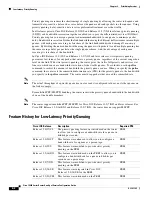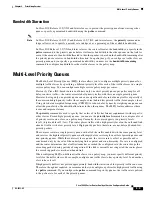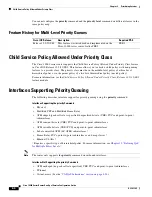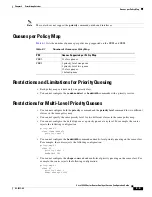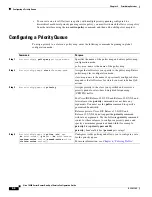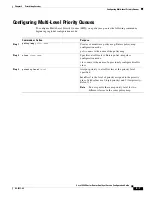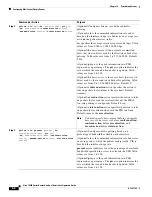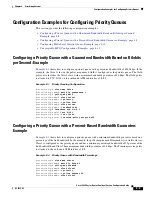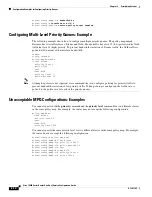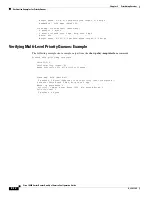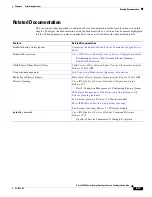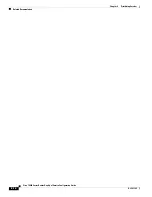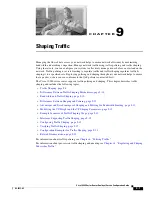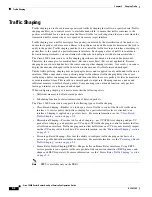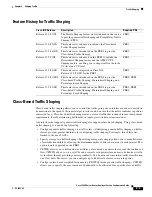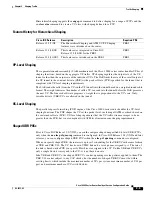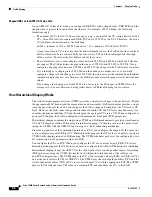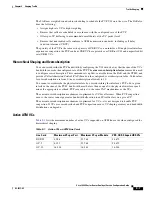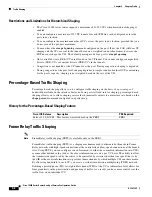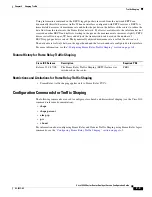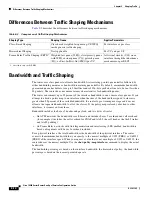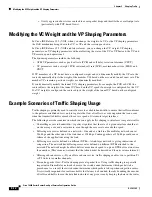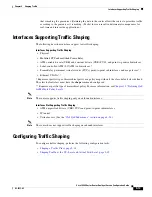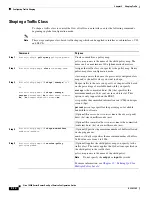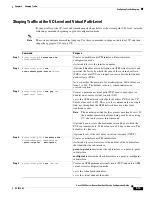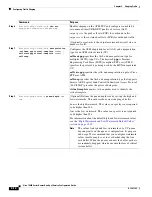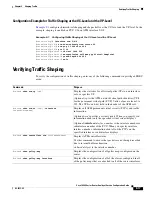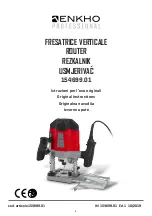
9-2
Cisco 10000 Series Router Quality of Service Configuration Guide
OL-7433-09
Chapter 9 Shaping Traffic
Traffic Shaping
Traffic Shaping
Traffic shaping is a tool used to manage network traffic by shaping the traffic to a specified rate. Traffic
shaping enables you to control access to available bandwidth, to ensure that traffic conforms to the
policies established for it, and to regulate the flow of traffic to avoid congestion that can occur when the
transmitted traffic exceeds the access speed of its remote target interface.
Traffic shaping uses a traffic descriptor for a packet—indicated by the classification of the packet—to
ensure that a packet, or data source, adheres to the policies contracted for it and to determine the QoS to
apply to the packet. Traffic shaping enables you to control the traffic leaving an interface, matching its
packet flow to the speed of a particular remote interface. By shaping a class of traffic to conform to
downstream requirements, you can eliminate bottlenecks in topologies with data-rate mismatches.
The Cisco 10000 series router’s traffic shaping algorithm is not based on the token bucket model.
Therefore, the concepts of committed burst (Bc) and excess burst (Be) are not applicable. Because
shaping does not use token buckets, the router cannot gather shaping statistics. As a result, you cannot
display the amount of shaped traffic in relation to the amount of traffic forwarded unshaped.
Unlike traffic policing, shaping does not propagate bursts and is applied to only outbound traffic on an
interface. When congestion occurs, policing drops traffic whereas traffic shaping delays the excess
traffic using a buffer or queuing mechanism and then schedules the excess packets for later transmission
over increments of time. This results in a smooth packet output rate. Shaping requires a queue and
sufficient memory to buffer delayed packets. Since queuing is an outbound function, only packets
leaving an interface can be queued and shaped.
When configuring shaping, you must ensure that the following exists:
•
Sufficient memory to buffer delayed packets
•
Scheduling function for later transmission of delayed packets
The Cisco 10000 series router supports the following types of traffic shaping:
•
Class-Based Shaping—Enables you to shape a class of traffic to control the flow of traffic on an
interface. A service policy that defines shaping for a particular traffic class is attached to an
interface. Shaping is applied on a per-class basis. For more information, see the
“Class-Based
Traffic Shaping” section on page 9-3
.
•
Hierarchical Shaping—Provides two levels of shaping—per-VC ATM-level shaping and per-VC
packet-level shaping—and provides per-VC and per-VP traffic shaping to control or modify the flow
of traffic on an interface. Traffic shaping ensures that traffic from one VC does not adversely impact
another VC and result in loss of data. For more information, see the
“Hierarchical Shaping” section
on page 9-4
.
•
Percentage-Based Shaping—Provides the ability to configure traffic shaping on the basis of a
percentage
of bandwidth available on an interface. For more information, see the
“Percentage-Based
Traffic Shaping” section on page 9-8
.
•
Frame Relay Traffic Shaping (FRTS)—Shapes traffic on Frame Relay interfaces. Using FRTS,
service providers can organize traffic into per-data-link connection identifier (DLCI) queues, and
shape each DLCI separately. For more information, see the
“Frame Relay Traffic Shaping” section
on page 9-8
.
Note
FRTS is available only on the PRE1.

